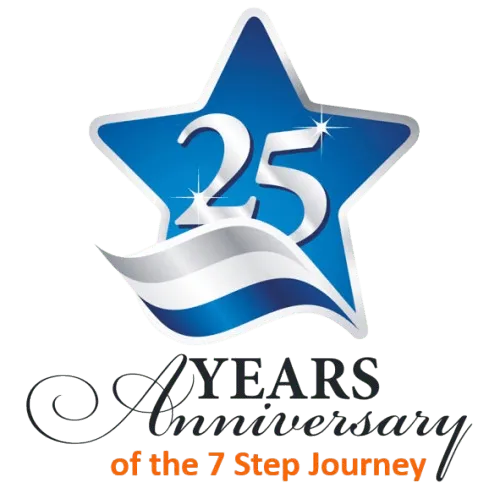Clare’s Clutter Clearing Story
Clare’s Clutter Clearing Story
From the age of 9 until my early 20’s, I struggled with my health. I had glandular fever which then morphed into M.E. (Myalgic Encephalomyelitis, also called Chronic Fatigue Syndrome).
It was the 80’s and a new condition that was little understood. In the UK a well-known TV presenter, Ester Rantzen, had a daughter who also had it.
M.E. isn’t a condition that can be cured, it’s a condition that is managed. The most common symptoms are extreme tiredness, problems sleeping, problems thinking and concentrating, poor memory, headaches, flu-like symptoms, muscle and joint pain. I had them all.
My mother was constantly on the phone to our doctor, and he couldn’t find any cause for my symptoms. ‘I think this is a case of School-phobia Mrs. Draper’ he told my mother. I was eventually diagnosed with Glandular Fever which had no definitive test.
I was taken to a private doctor in London to see if complimentary medicine might help with the symptoms. He diagnosed this new condition – M.E. I was immediately put on multiple mineral supplements – vitamin C, various different vitamin D’s, other very specific vitamins and minerals that you couldn’t buy on the high-street back then.
I did half days at school and no physical education classes because of the symptoms. My mother would pick me up at lunchtime on the days I went to school.
My friends stopped lending me their schoolbooks or notes so I could to catch-up on what I missed because they didn’t know if they’d get their book or notes back the following day, such was the unpredictability of my school attendance.
The headmistress of my junior school called my parents into her office one day to advise them that they should start looking for an alternative school for me because I was unlikely to pass the 11 plus exam to get into the senior school. She was wrong. I passed and got accepted, despite my poor attendance record.
Somehow – and even now I don’t know how – I managed to be a star in the school swimming team and did well in the school tennis team. The irony was I rarely turned up for the team practices due to my health, yet on the day of the swim meet or tennis match I would turn up, win, then return to bed to recover for a day or two. I even swam a couple of times for the county swim team and had the potential to make it to Wimbledon.
Change
This pattern of managing my M.E. through days off, consultations, daily mineral supplements and rest continued for another 5 years until my 16 plus exams, at which point I was ready for a change.
My parents and I looked around at other schools, and I was offered a a place at a boy’s boarding school in Oxford that only took a few girls for the 2 years of the 6th form. They even said that my place wasn’t conditional on my 16 plus exam results, given the poor prediction by my headmistress.
I was now focused on my goal of proving everyone wrong and getting good exam results.
I maximised my revision on the good days because I never knew whether tomorrow would be a bad day or not. I had weekly vitamin and B12 drips at the London clinic of my specialist consultant to help with my energy, memory and concentration. A letter was written to and accepted by the exam board to give me extra time in my exams because of my energy, memory and concentration issues relating to my condition.
Despite all expectations, I achieved all A and B grades in my 16 plus exams and took great pleasure in waving my headmistress goodbye on my last day!
My home environment and the dysfunctionality of our family meant I was impatient to go to my new boarding school. The school was supportive and understanding of my health issues, kind and compassionate, and I thrived. Boys were so much less complicated than the all-girls school I’d been at for the previous 10 years!
For the first time in my life, I made firm friends. I thrived on the independence and without even noticing it, my health started to improve. I still had days when I was exhausted, but overall, the frequency of bad days and tough weeks reduced.
2 years after having weekly drips to get through my 16 plus exams, I didn’t need the same for my 18 plus A-Level exams. My condition had improved, and there was no explanation as to why. The only things that had changed was my environment and support network.
By the time I left my Oxford boarding school I was well enough to go on my Gap Year adventure to Guyana, South America without any supplements. By the time I returned, 5 months later ready to go to University, my M.E. symptoms had all but disappeared.
As the M.E. symptoms subsided, I started to develop a new problem with my lower back. I was sent to a Harley Street physiotherapist and had every test and x-ray under the sun. They didn’t find anything to warrant the extremes of pain and immobility that I experienced periodically. I had to wear a back brace to get me through the particularly bad days.
Patterns
The curious thing was that when I cleared my clutter and created the LIFE Timeline in 2000, I realised what was going on. It suddenly started to make sense. I could see a pattern in my LIFE Timeline of triggers in relation to my health.
When I felt unsupported, unappreciated, unheard, and unloved my physical health deteriorated, so much so that I now look back on my M.E. and believe that it was actually a physical expression of growing up in a family that didn’t ‘do’ emotion. I now strongly believe my M.E. was actually childhood depression. I believe that’s why, when I moved schools, the symptoms improved. I believe that as I got older and I had more life experiences, emotional highs and lows, emotional stress started to express itself in my lower back issues because I didn’t know how to deal with emotions.
As a therapist once commented:
It’s interesting that you describe your lower back pain as making you feel ‘vulnerable’, when at the same time you describe feeling rejected, emotionally vulnerable, and unable to express or verbalize your feelings.’
Don’t you just hate it when people trigger lightbulb moments about things you’ve struggled to understand for years?! Yet I’m so glad she shared that observation with me because it became a significant turning point.
My LIFE Timeline shows the evidence of what she described. I can literally see the triggers and patterns weaving their way through my LIFE Timeline. Yet despite this new awareness, I’ve had to accept that I can’t always control or eliminate the triggers.
In the weeks leading up to my wedding in Cyprus in 2006, and months after, I was on crutches, alongside multiple pain relief injections costing £1,000 / $1,200 each – all because of the emotional trauma I was experiencing because of my parents’ refusal to come to my wedding.
Since 2016 I’ve found that regularly practicing my T.R.E. enables me to manage my back by ensuring any small traumas, feelings and vulnerabilities don’t bottle up and trigger an episode. I listen to my back carefully.
I’m so glad I learnt so much from my LIFE Timeline. I’m glad I now know that when I feel lower back pain, it’s a coping mechanism that I ignore at my peril.

